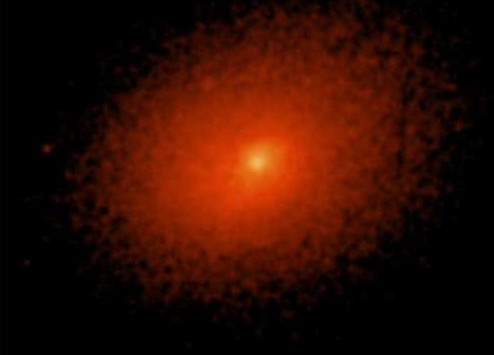The
uncomfortable truth?
|
| The recent discovery
that the expansion of our observable universe, instead of coming to a
modest slow-down is
accelerating further, has stirred some unrest among cosmologists. For
decades,
the preferred guess has been a final halt of expansion at the end of
time.
With the new observation that very distant supernovae seem to be dimmer
than expected, such a peaceful outlook has become rather unlikely. Not
only
that we feel uncomfortable with that apocalyptic perspective, it also
represents
a challenge for theoretical physicists. In former decades, we mainly
discussed to which extent the expansion of the universe was
decelerating: Would it
revert to contraction? Would expansion come to a halt? Or would it
never
come to a halt? The fact that the universe was actually accelerating
its expansion came as a surprise and required a major revision of our
cosmological
view of the world. |
| One of the few physical
laws most of us will remember from secondary school is, that a body
changes its velocity if it is under the influence of a force. The
intuitive expectation of
a decelerating expansion rate of our universe follows from our
life-long
experience with gravity, the force that was first described
mathematically
by Sir Isaac Newton and that drives apples to fall from trees and keeps
our earth in orbit around the sun. The conclusion was not too
far-fetched
that it will finally somehow keep together also our expanding universe.
However, since we now diagnose an increase (and not a decrease) in the
recession
velocity of distant galaxies, some other forces less amenable to
intuition
seem to be operative. |
| It did not take too long
and a new tasty term was found to designate the source of this
repulsive force: "dark
energy" (in essence a codeword for something unknown, Dvali
2004). And although these new developments had not been greeted with
much enthusiasm in the beginning, in the meantime a majority of
cosmologists seems to believe that this newly postulated Dark Energy
thing makes up about 70% of our actual universe. Rarely before, a
new cosmological concept has been widely accepted in such a short time. |
| An alternative model
suggests that inflation, the mechanism made responsible for blowing up
our universe from particle physics dimensions to macroscopic dimensions
10-30 sec after the Big Bang [see my earlier
essay] has proceeded on a very modest scale up to present
times. In that case, our impression of increased recession of distant
galaxies would be due to the continued increase in the extension of
spacetime and not to a change in the velocities of these galaxies
themselves. |
| Having tasted the
sweetness of elementary particle physics, cosmologists lost their
shyness and are ready now for
rather immodest proposals. E.g., they soon recognized that even in a
totally
empty space, quantum fluctuation should permanently lead to the
spontaneous
appearence and disappearence of particle / anti-particle pairs. A
tentative
estimate of this "vacuum energy" resulted in a number roughly 120
orders
of magnitude above the energy density of ordinary matter. However, they
stand back from equaling this quantity to the mysterious force
accelerating
the expansion of the universe, since in that case, not only would
distant galaxies be accelerated, but also our earth and everything on
it would be torn apart. Only the most fanatic theorists will be
disappointed that, obviously, this is not the case. |
| Neither Dark Energy nor
continued Inflation can count on our spontaneous comprehension. In both
scenarios, assumptions far from our every-day experience have to be
made. This pill is difficult to swallow for an entity that is supposed
to be responsible for 70% of
our reality... Hopefully other, more orthodox explanations will be
found (Ellis 2008). |
6/05 < MB
6/05, 4/08 > 7/05
|
| More... |
